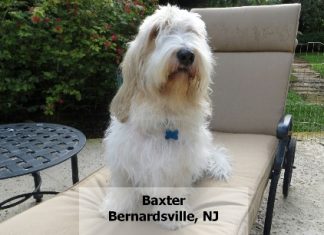Welcoming a puppy into your home is an exciting and joyful experience, filled with playful moments and the promise of a loyal companion. However, like many new pet parents, you may find yourself facing the challenge of separation anxiety, a common issue that can make leaving your puppy alone a stressful ordeal for both of you. Understanding that this is a natural part of your puppy’s development is the first step toward addressing it with compassion and patience. In this article, we’ll explore effective strategies to help your furry friend feel more secure and comfortable when you’re not around, ensuring a happier and more harmonious household. Whether you’re a first-time pet owner or an experienced dog lover, these practical tips will guide you in creating a supportive environment that fosters your puppy’s confidence and independence.
Understanding the Causes of Puppy Separation Anxiety
Understanding the emotional world of puppies is crucial to addressing their anxiety when left alone. This behavior often stems from a combination of natural instincts and early experiences. Puppies are inherently social animals, relying heavily on their pack – or in this case, their human family – for safety and comfort. When separated, they might feel vulnerable and stressed, leading to behaviors such as whining, barking, or destructive chewing.
- Lack of Early Socialization: Puppies not exposed to various environments, people, and experiences during their formative weeks may struggle with independence.
- Changes in Routine: A sudden shift in the household schedule, like a new job or school year, can trigger anxiety as the puppy adjusts to more time alone.
- Traumatic Experiences: Puppies rescued from shelters or those who have experienced early life trauma may have a heightened sense of anxiety due to their past.
- Over-attachment: Sometimes, an overly dependent relationship with the owner can lead to anxiety when separation occurs.
Addressing these root causes with patience and understanding is the first step in helping your puppy build confidence and security. By acknowledging their needs and past experiences, you pave the way for a happier, more balanced furry friend.
Creating a Safe and Comforting Environment for Your Puppy
To help your puppy feel secure when you’re not around, it’s essential to create a space that offers both comfort and safety. Start by designating a specific area in your home where your puppy can retreat. This could be a cozy corner in your living room or a dedicated puppy room. Make sure this area is filled with soft bedding, a favorite blanket, and plenty of toys to keep them entertained and comforted. The familiar scents and textures will provide reassurance and a sense of stability.
Incorporate elements that will make the environment more inviting and soothing for your little companion. Consider the following:
- Calming Music: Play gentle, calming music or white noise to help mask outside noises and reduce stress.
- Comforting Scents: Use pet-safe aromatherapy products, like lavender or chamomile, to create a relaxing atmosphere.
- Consistent Routine: Maintain a regular schedule for feeding, playtime, and bathroom breaks to help your puppy know what to expect.
By ensuring this environment is both secure and comforting, you’re providing your puppy with a safe haven that can ease their separation anxiety and foster a sense of independence.

Practical Training Techniques to Ease Anxiety
Helping your puppy manage anxiety involves consistent and compassionate training techniques. Begin by establishing a safe space for your puppy, such as a cozy corner with their favorite toys and a comfortable bed. This safe zone should be a place where they feel secure when you’re not around. Incorporate brief departures and returns, gradually increasing the time apart to build their confidence. Remember, patience is key; sudden or lengthy separations can exacerbate their anxiety.
Introduce activities that promote independence, such as interactive toys or puzzles that can keep them engaged. Consider the following techniques:
- Desensitization: Practice leaving the house for short intervals, slowly increasing the time to help them adjust.
- Positive Reinforcement: Reward calm behavior with treats or affection, reinforcing that being alone is not a negative experience.
- Routine Establishment: Maintain a consistent schedule for feeding, walks, and playtime to provide a sense of stability.
By incorporating these methods, you’ll not only alleviate anxiety but also foster a trusting and secure relationship with your furry friend.
















